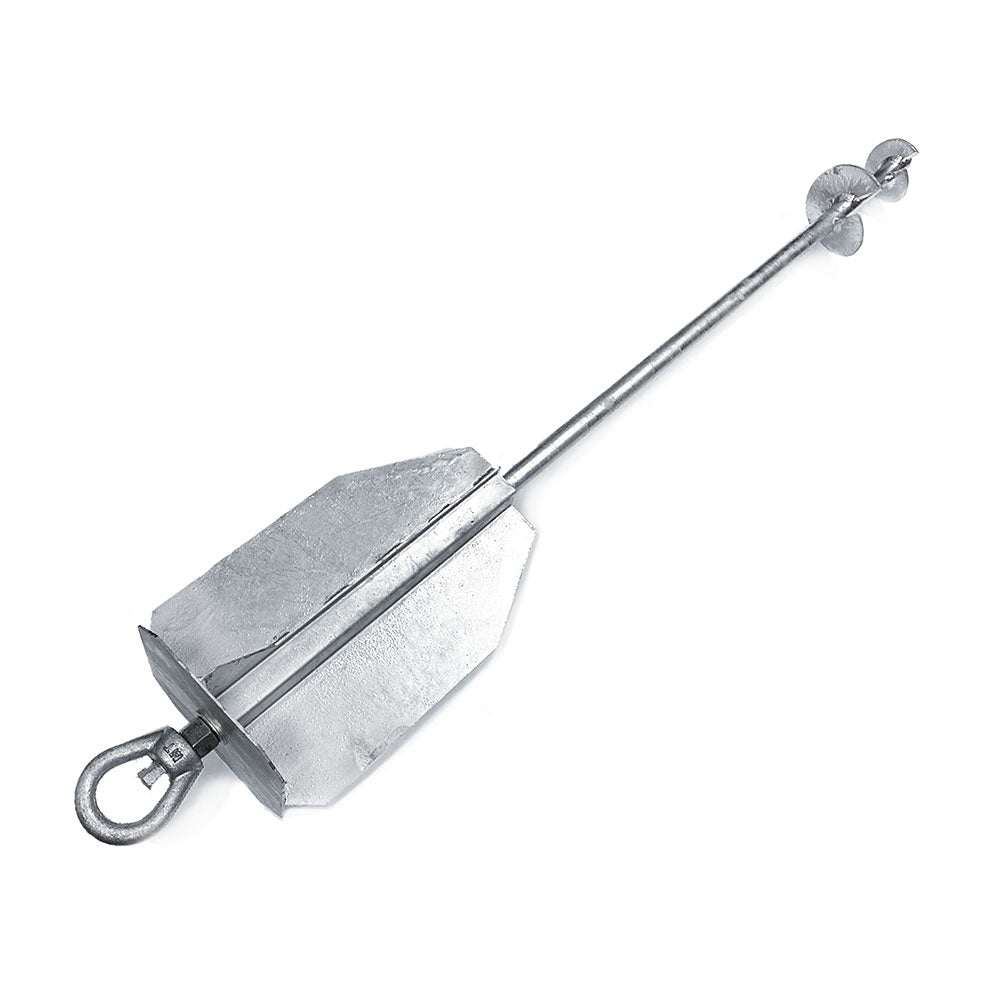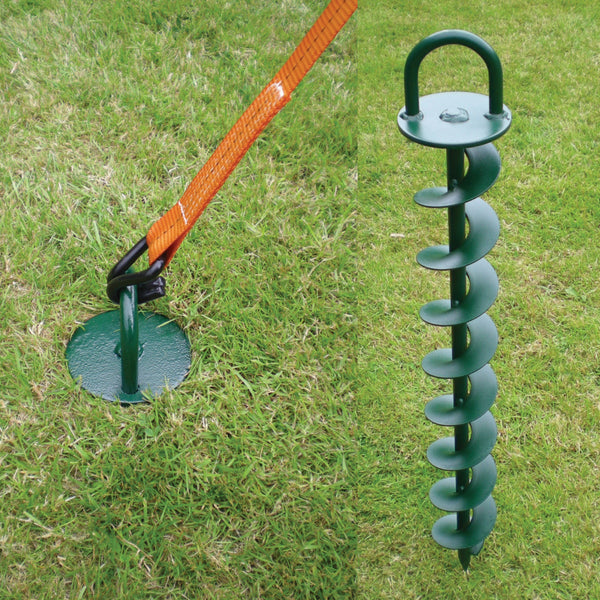Factors to Consider Before Investing in a Durable Ground Anchor
Factors to Consider Before Investing in a Durable Ground Anchor
Blog Article
Discover the Different Kinds Of Ground Anchor for Your Next Job
From auger supports, which succeed in varied dirt conditions, to risk anchors designed for short-lived installations, the alternatives are countless. Furthermore, concrete and screw supports existing distinct advantages in specific scenarios, while deadman supports are customized for applications requiring resistance to lateral pressures.

Auger Anchors
Auger supports are a popular selection in different building and landscape design projects because of their one-of-a-kind layout and effective securing abilities. These anchors include a helical screw-like shaft that is driven into the ground, permitting a safe and secure hold. The spiral layout promotes easy installation and takes full advantage of resistance versus side forces, making auger anchors especially reliable in applications such as secure fencing, short-lived structures, and erosion control.
The installation process of auger supports is relatively simple. Auger anchors can be easily eliminated and reused, which adds to their cost-effectiveness and sustainability.
One of the substantial advantages of auger anchors is their ability to disperse lots equally across the surrounding soil, minimizing the risk of dirt disruption and minimizing environmental impact. In addition, they are much less susceptible to heaving or loosening up gradually compared to standard anchoring approaches. Auger anchors are an excellent selection for tasks needing sturdy and reliable anchoring options.

Stake Anchors
When it comes to protecting frameworks in a variety of exterior applications, risk supports supply a uncomplicated and reliable service. These anchors are usually built from resilient products such as steel or aluminum, designed to endure environmental tensions while giving optimum stability. Their basic design allows for fast setup, making them a suitable option for permanent or temporary anchoring needs.
Stake supports are particularly helpful in securing outdoors tents, covers, and various other lightweight frameworks against wind and weather. They function by being driven into the ground at an angle, creating a solid hold that stands up to pull-out forces - Ground Anchor. The efficiency of risk supports depends on numerous aspects, consisting of soil kind, moisture web content, and the angle of installment
For added security, many risk supports come with accessory factors for ropes or bands, permitting stress changes as needed. In applications such as landscape design or construction, they can successfully maintain devices or structures on irregular surface. On the whole, stake supports provide a versatile and affordable option for safeguarding numerous outside installments, making them a recommended selection for service providers and do it yourself enthusiasts alike.
Concrete Anchors
Concrete supports give a durable remedy for safeguarding frameworks to concrete surface areas, ensuring security and safety in various applications. These supports are necessary for tasks ranging from residential building and constructions to large-scale industrial installations. They can be found in different kinds, including expansion anchors, sticky anchors, and undercut supports, each developed for specific lots needs and environmental problems.
Glue supports use high-strength epoxy or resin to bond the anchor to the concrete, providing superior load-bearing capabilities, especially in fractured concrete circumstances. Undercut supports create a special shape within the concrete, giving outstanding holding power, especially in applications where tensile tons are prevalent.
Selecting the ideal concrete anchor involves thinking about factors such as the weight of the load, the condition of the concrete, and ecological problems. Proper installment strategies are critical to ensure optimum efficiency and reliability. When implemented properly, concrete supports substantially boost the structural integrity of numerous projects, making them essential in contemporary building techniques. Understanding the details requirements of your project will certainly aid in choosing the appropriate sort of concrete support for the job.
Screw Anchors

Screw anchors are a functional fastening solution that can be properly used in a selection of applications visit here where typical concrete supports might not be adequate. These anchors contain a helical style that permits them to be quickly driven into the ground, making them optimal for use in dirt and various other substrates. Their one-of-a-kind framework supplies outstanding holding power and resistance to pull-out forces, making them appropriate for numerous tasks, from landscaping to structural assistance.
One of the key advantages of screw supports is their ease of setup. They call for minimal tools and can typically be installed without the requirement for excavation, which conserves both time and labor costs. In addition, screw anchors can be gotten rid of and reused, using a lasting solution for short-lived applications.
Screw supports are specifically useful in locations where soil conditions are testing, such as sandy or loosened soils. Their capability to be installed at differing midsts enables modification based upon particular project requirements. On the whole, screw anchors give a trustworthy and effective anchoring technique, making them a superb choice for designers and professionals looking for effective remedies for their tasks.
Deadman Anchors
Deadman supports work as a robust solution for supporting frameworks in difficult conditions, especially where typical securing techniques might fail. These supports include large, hefty things buried underground, which develop resistance against side forces. The layout read generally entails a horizontal element, such as a block of concrete or a steel plate, hidden in the dirt, to which cables or straps are affixed.
The performance of deadman anchors hinges on their ability to distribute lots over a bigger area, lowering the risk of failing in unstable dirt problems. They are particularly beneficial in applications such as retaining wall surfaces, short-term frameworks, and slope stablizing, where dirt activity can jeopardize the stability of the structure.
Installation of deadman supports needs cautious planning to ensure they are placed at the proper depth and orientation, maximizing their load-bearing ability. While they might need even more labor and product than light-weight supports, their integrity in damaging problems makes them important for long-term tasks. Deadman anchors are functional and can be adjusted to various applications, making them a go-to option for engineers facing special obstacles in their jobs.
Conclusion
In summary, picking the proper sort of ground anchor is click here now important for making sure stability and safety in various projects. Auger supports master varied soil conditions, while risk supports match short-lived applications. For concrete surfaces, growth and sticky supports supply trustworthy alternatives, and screw supports use versatility in challenging surfaces. Deadman anchors are particularly effective in withstanding side pressures for retaining wall surfaces. Cautious factor to consider of these alternatives will enhance project end results and structural integrity.
Furthermore, concrete and screw supports existing special benefits in certain scenarios, while deadman anchors are customized for applications requiring resistance to side forces - Ground Anchor.Auger supports are a prominent choice in numerous construction and landscaping tasks due to their distinct design and effective anchoring capabilities. They come in different types, including growth supports, sticky supports, and undercut supports, each created for details load demands and environmental conditions
Glue supports utilize high-strength epoxy or resin to bond the support to the concrete, providing remarkable load-bearing capabilities, particularly in broken concrete scenarios. Overall, screw anchors supply a reputable and efficient anchoring method, making them an excellent selection for designers and professionals looking for effective services for their jobs.
Report this page